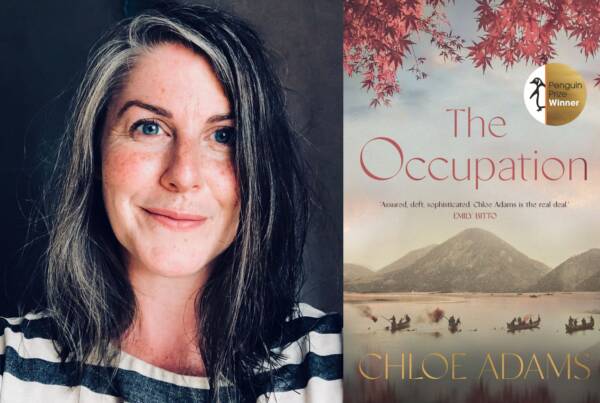Writing by Alison Booth
If history is anything to go by, clampdowns on climate protesters should concern us all.
The early 1970s were a time when Australia was changing dramatically. Our involvement in the Vietnam War had come to an end along with the momentous change of late 1972, when the longstanding conservative federal government was ousted by the Labor Party led by Gough Whitlam.
Interestingly, this period also saw the emergence of the second-wave of Feminism with the confrontation of legal and social double standards as well as workplace discrimination and sexual harassment. Not only were women beginning to push for female sexual freedom but they were also taking bold steps that transformed urban politics and influenced generations of Australian activists around heritage, planning and social issues.
Today, if you catch a ferry from Circular Quay to Hunters Hill, you can walk along the southern shore until you come to Kelly’s Bush. There you will find a faded photographic plaque of NSW Builders Labourers’ Federation leader and environmentalist Jack Mundey with the 13 energetic middle-class women who called themselves the ‘Battlers for Kelly’s Bush’ – a group of women who fought for their local natural environments that were being threatened by development and construction initiatives across the state.
In 1971, Sydney was in the midst of a property and construction boom. Any site that property developers and the road building lobby could get their hands on was up for grabs. In the middle-class suburb of Hunters Hill, developer AV Jennings planned to build high rise apartments on Kelly’s Bushland. What they didn’t foresee was having to contend with 13 women who would fight to preserve the land for its continued use as a favourite community spot and its environmental heritage. With the help of the NSW Builders Labourers’ Federation (NSW BLF) and the hundreds of community members that the battlers had rallied, the world’s first green ban was applied in Sydney at Hunters Hill in 1971 along with the term ‘greenie’ which was said to arise out of the movement.
We have lots to be grateful for because of the green bans movement that went on to save many heritage sites across Sydney in a variety of culturally and historically important areas (such as Glebe, the Rocks, Woolloomooloo, Indigenous housing in Redfern, National Trust properties and the like), which were saved from destruction by these bans.
Unfortunately, it wasn’t to last. Powerful interests were horrified by the success of the green ban movement. Jack Mundey lost leadership of the NSW BLF in 1973 with developers bribing corrupt officials to intervene and stop the bans, and working with the federal BLF union to ensure that only workers with a ‘federal union ticket’ could work on sites, thus denying work to the NSW BLF activists.
By the late 1970s green bans had gone. Secondary boycott laws were introduced by the right-wing government in 1977, further restricting activities. Subsequent legislation introduced heavy fines for those who participated in certain types of industrial action and hampered efforts to reintroduce these techniques.
People often ask me about the inspiration for my novels. For the latest novel Bellevue, it was green bans, strong women, and the Upper Blue Mountains of NSW. Bellevue is about an energetic widow – one of the Battlers for Kelly’s Bush – who inherits a dilapidated old house near a mountain wilderness, and who confronts her family’s mysterious past while she struggles to protect her inheritance and her community.
Although Bellevue is historical fiction, its themes have a strong contemporary resonance. They focus on environmental and conservation issues, displacement from home, seeking a safe place, and caring for future generations.
Regulatory control over the natural and built environment has expanded since the early 1970s. One important development was the addition of the Greater Blue Mountains area to the World Heritage List, and in 2000 the Greater Blue Mountains became a UNESCO World Heritage Area. But this doesn’t mean that their preservation is guaranteed.
While laws have been established to prevent destruction of our environmental and cultural heritage, there is evidence that in some places these are being weakened or ignored altogether. A recent example of a large company flouting such laws is the destruction in 2020 of culturally significant sites of Juukan Gorge in Western Australia by the mining company Rio Tinto. Another very recent example is in NSW, where the consultation process was allegedly deliberately curtailed for two proposals to grant 20-year leases to Wild Bush Luxury Pty Ltd within the Gardens of Stone State Conservation Area in the Blue Mountains.
Moreover, restrictions on protesters’ rights and regulatory control of environmental activism have increased since the early 1970s. In what many people view as an assault on democracy, a string of state laws was passed in 2022 that restricted protesters’ rights. By criminalising peaceful environmental protests, the new laws have altered the definition of lawful dissent.
NSW, a leader in this regard, introduced in April 2022 high fines and prison sentences for protesters. Other states followed, with similar legislative changes. What is clear is that lawful dissent In Australia is being increasingly curtailed. The case of Deanne ‘Violet’ Coco illustrates how viciously the new legislation can be used. Coco, a climate activist who blocked a lane of traffic on Sydney Harbour Bridge, was sentenced to 15 months in prison with a non-parole period of eight months. The highly-respected International Human Rights Watch accused the NSW state government of ‘disproportionately punishing climate protesters in violation of their basic rights to peaceful protest’ . A similar criticism can be directed at Australia’s other states.
Climate activists should be deeply concerned at these blatant attempts by governments, developers and corporations to erode people’s rights to organise and protest. In many ways we are taking steps backwards at the very time when we should be moving forwards to stop the irreversible harm being done to our environment and our planet.
My latest novel sheds light on the importance of community action like that displayed by the Battlers of Kelly’s Bush and the need to look out for future generations. But what happened to the characters in my novel might no longer be possible unless concerned citizens take action against the draconian new legislation.
We pay our deepest respects to the Dharug, Gundungurra, Wanaruah, Tharawal, Darkinjung and Wiradjuri language groups as the traditional owners of the Greater Blue Mountains World Heritage Area, and to their elders, past and present.






